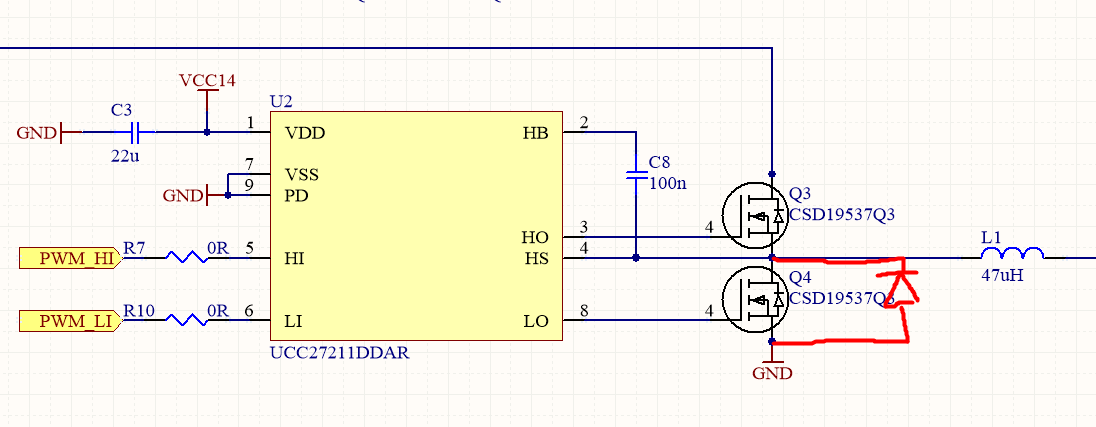Other Parts Discussed in Thread: TPS2411
Current application:
Diode is the SS510. This circuit works fine.
The problem is that Q3's body diode conducts from out to in when the mosfet driver is off. In our application this is not acceptable.
So ideally we would want the high side mosfet circuit to be bi-directional (back to back nmos). But it seems this driver can not handle that. Any ideas and or recommendations to do this ?


